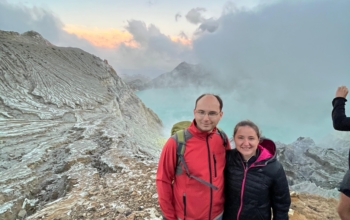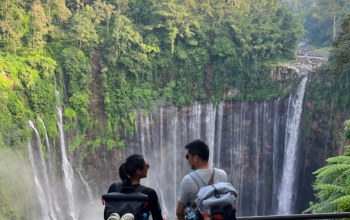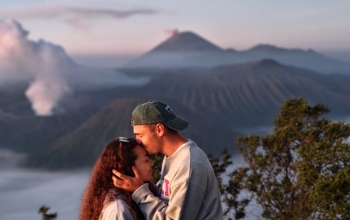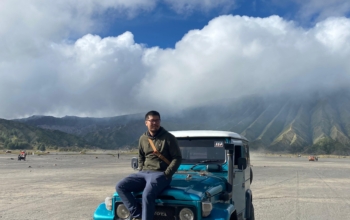Gandrung is more than just a dance. It is a living cultural symbol of Banyuwangi, East Java, rooted in deep historical, spiritual, and artistic values. This traditional performance originated from the Osing tribe’s expression of gratitude to Dewi Sri, the revered rice goddess, for her blessings of abundant harvests. Over time, Gandrung has evolved into a symbol of resistance, celebration, and identity.
Historically, Gandrung played a key role during the fight for Indonesian independence. Its origin traces back to the legendary figure of Gandrung Marsan, who brought the dance to public recognition. The word “Gandrung” itself translates to “deeply in love” or “enchanted,” reflecting both the elegance of its movements and the emotional connection it evokes. Interestingly, it was once used as a strategic distraction against enemies, showcasing its historical depth and versatility.
“Gandrung is not just a dance, this Banyuwangi city icon also has a rich history, meaning and philosophy.”
The dance is now synonymous with ceremonies to welcome honored guests and to highlight important cultural events. Its performance is a graceful display of feminine power, traditional music, and intricate storytelling through movement. Each gesture holds philosophical meaning, passed down from generation to generation with great care.
To become a Gandrung dancer is not merely to learn choreography — it is to inherit a sacred tradition. Young dancers must undergo a thorough process of education, both oral and written, about the values, etiquette, and symbolism behind every movement. They are also believed to carry spiritual responsibilities, sometimes even being recognized as healers within their communities.
Before a dancer is officially allowed to perform, they must go through an important ritual process known as Meras Gandrung. This rite marks the peak of a dancer’s preparation, consisting of intense training and ceremonial practices that purify and legitimize them as true bearers of the Gandrung legacy.
“Meras Gandrung is one of the series that must be passed before the Gandrung dancers can finally show this dance for various purposes.”
This sacred ritual not only tests the dancer’s technical skill but also strengthens their connection to the spiritual and cultural roots of the dance. Only after completing this stage can they be fully accepted and perform Gandrung in both public celebrations and spiritual ceremonies.
The enduring popularity of Gandrung continues to shape the cultural landscape of Banyuwangi. It is celebrated annually in the Gandrung Sewu Festival, where thousands of dancers unite on the beach to perform in harmony, symbolizing unity, gratitude, and cultural pride.
With its combination of history, meaning, and ritual, the Gandrung dance stands as one of Indonesia’s most treasured cultural heritages. It is not just performed, but lived — a legacy passed with reverence and love by those who carry its message through time.
Maybe you are interested in reading the following article:

Seblang Bakungan 2025: A Sacred Dance Revival That Echoes Through Banyuwangi’s Spirit
Hello, fellow travelers! Prepare to be enchanted by the mesmerizing soul of Banyuwangi’s culture. The sacred Seblang Bakungan ceremony is returning from June 10 to 12, 2025, starting each evening at 6:00 PM local time. The festivities begin with a vibrant bazaar showcasing local micro-businesses, a curated dance series, and the much-loved Jazz Patrol perfo... read more

The Natural Wonder of Ijen Crater and the Stunning Blue Fire Phenomenon at the Eastern Tip of Java
Ijen Crater is one of the most famous natural tourist destinations in Indonesia. Located on the border of Banyuwangi and Bondowoso Regencies, East Java, this crater is part of the Mount Ijen complex which has a height of around 2,386 meters above sea level. Attractions of Ijen Crater The main uniqueness of Ijen Crater is... read more

Festive Takjil Market Opens at Boom Marina Beach with Free Entry All Ramadan
The Boom Marina Takjil Market officially kicked off on Saturday, March 1, 2025, bringing vibrant energy to the shores of Boom Marina Beach in Banyuwangi. The festive event was inaugurated directly by Banyuwangi Regent Ipuk Fiestiandani and was the result of strategic collaboration with PT Pelindo Properti Indonesia (PPI) Banyuwangi. What sets this year’s R... read more
Contact Us
If you have any questions, please contact us.
-
Hotline
+6281336278367 -
Whatsapp
+6281336278367 -
Email
pepejavatours@gmail.com







No comment yet